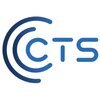Filter interviews by
Cs Soft Solutions Junior Software Developer Interview Questions and Answers
Cs Soft Solutions Junior Software Developer Interview Experiences
1 interview found
I applied via Company Website and was interviewed before Feb 2022. There were 2 interview rounds.

(3 Questions)
- Q1. Basic tell me about yourself question.
- Ans. Answer them as best of your abilities. If you come from their institute in Chandigarh then they will anyway hire you.
- Q2. Why you want to join as a developer?
- Ans.
I have a passion for coding and problem-solving, and I believe that joining as a developer will allow me to contribute to innovative projects and continuously learn and grow in the field.
I have always been fascinated by technology and enjoy the process of creating software solutions.
I have a strong foundation in programming languages such as Java and Python, and I am eager to apply my skills in a professional setting.
I...
- Q3. Love creating new things and loves new technologies.
Interview Preparation Tips
Top trending discussions






Interview questions from similar companies

Software Engineer Interview Questions & Answers
CTS Consulting & Technical Supportposted on 1 Apr 2021
Interview Questionnaire
1 Question
- Q1. Concepts

Software Engineer Interview Questions & Answers
CTS Consulting & Technical Supportposted on 1 Apr 2021
Interview Questionnaire
1 Question
- Q1. Concepts

Software Developer Interview Questions & Answers
CTS Consulting & Technical Supportposted on 9 Oct 2021
I applied via Campus Placement and was interviewed before Oct 2020. There was 1 interview round.
Interview Questionnaire
1 Question
- Q1. Everything in your resume questions from your domain and 1 quizzes
Interview Preparation Tips

Software Developer Interview Questions & Answers
CTS Consulting & Technical Supportposted on 13 Sep 2021
I applied via Recruitment Consultant and was interviewed in Mar 2021. There was 1 interview round.
Interview Questionnaire
3 Questions
- Q1. Java questions
- Q2. Stream questions
- Q3. Collections sorting
Interview Preparation Tips

Software Developer Interview Questions & Answers
CTS Consulting & Technical Supportposted on 24 Mar 2021
Interview Questionnaire
4 Questions
- Q1. About your self
- Q2. About java
- Q3. Phython
- Q4. Project details
Interview Preparation Tips

Senior Software Engineer Interview Questions & Answers
CTS Consulting & Technical Supportposted on 4 Jan 2022
I applied via Naukri.com and was interviewed in Dec 2021. There were 3 interview rounds.
Interview Questionnaire
2 Questions
- Q1. Mainframe Interview COBOL vsam restart process
- Ans. 1. Delete the existing file. 2. Create a new cluster. 3. Repro to copy in 3rd step
- Q2. How to resolve sb37 Increase the space by twice at first if it didn't fix then we can use volume counter to increment the no of extend
- Ans.
To resolve sb37, increase space by twice and use volume counter to increment extend if needed.
Increase space by twice at first
If issue persists, use volume counter to increment extend
Ensure adequate space is available before running job
Interview Preparation Tips
Skills evaluated in this interview

Software Engineer Interview Questions & Answers
CTS Consulting & Technical Supportposted on 8 Mar 2022
Good
(1 Question)
- Q1. Tell me about urself
Interview Preparation Tips

Software Engineer Interview Questions & Answers
CTS Consulting & Technical Supportposted on 20 Apr 2022
App Test
(1 Question)
- Q1. About .NET technologies
(2 Questions)
- Q1. Where do you see yourself in 5 years?
- Q2. Tell me about yourself.
Interview Preparation Tips

Senior Software Engineer Interview Questions & Answers
CTS Consulting & Technical Supportposted on 21 May 2022

(1 Question)
- Q1. Explain about java threads
- Ans.
Java threads are lightweight processes that enable concurrent execution of code.
Threads allow multiple tasks to be executed simultaneously within a single program.
They share the same memory space and can communicate with each other.
Java provides built-in support for creating and managing threads through the Thread class.
Threads can be created by extending the Thread class or implementing the Runnable interface.
Thread s...
Interview Preparation Tips
Skills evaluated in this interview
Cs Soft Solutions Interview FAQs
Tell us how to improve this page.
Cs Soft Solutions Interviews By Designations
- Cs Soft Solutions Software Engineer Interview Questions
- Cs Soft Solutions Product Support Executive Interview Questions
- Cs Soft Solutions Senior Devops Engineer Interview Questions
- Cs Soft Solutions Geographic Information Systems/GIS Interview Questions
- Cs Soft Solutions Application Support Engineer Interview Questions
- Cs Soft Solutions Junior Software Developer Interview Questions
Interview Questions for Popular Designations
- Junior Software Engineer Interview Questions
- Junior Engineer Interview Questions
- Junior Developer Interview Questions
- Junior Executive Interview Questions
- Junior Web Developer Interview Questions
- Junior Officer Interview Questions
- Junior Engineer Civil Interview Questions
- Junior Business Analyst Interview Questions
- Show more
Cs Soft Solutions Junior Software Developer Interview Process
based on 1 interview
Interview experience
Interview Questions from Similar Companies
Cs Soft Solutions Junior Software Developer Reviews and Ratings
based on 2 reviews
Rating in categories
|
Software Engineer
55
salaries
| ₹1.8 L/yr - ₹7 L/yr |
|
Software Developer
39
salaries
| ₹1.8 L/yr - ₹7 L/yr |
|
Business Analyst
18
salaries
| ₹1.9 L/yr - ₹4.8 L/yr |
|
Junior Software Engineer
18
salaries
| ₹1.5 L/yr - ₹3.5 L/yr |
|
Product Support Executive
17
salaries
| ₹2.3 L/yr - ₹7.5 L/yr |

Coca-Cola Company

Dhoot Transmission

Genius Consultants

Apotex Research
- Home >
- Interviews >
- Cs Soft Solutions Interview Questions >
- Cs Soft Solutions Junior Software Developer Interview Questions












